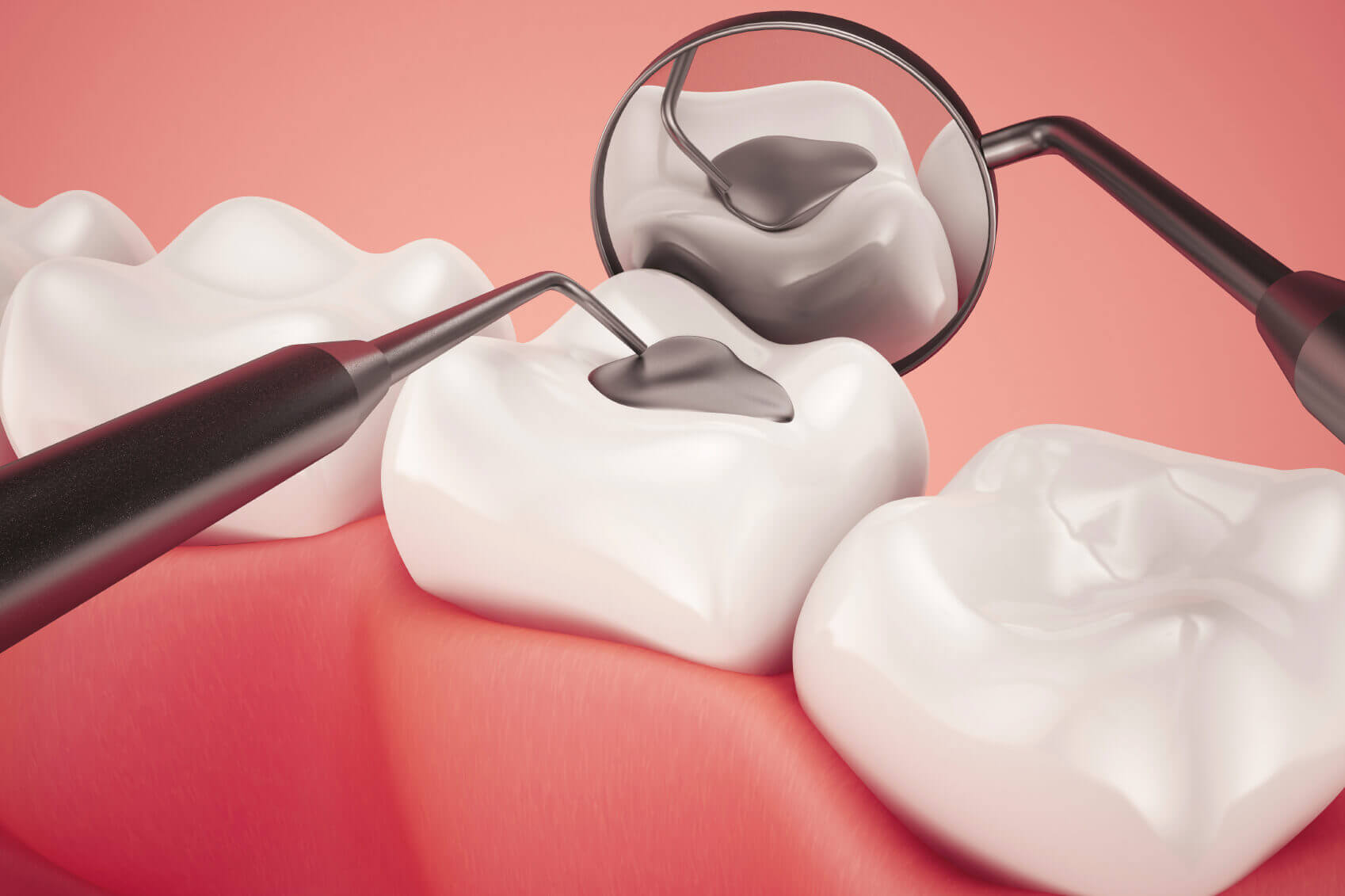Tooth Coloured Fillings
It is quite common to see a mouth full of black fillings if someone opens their mouth wide when laughing or talking. Nowadays this no longer needs to be the case as we have tooth coloured (white) filling materials that are strong and durable enough to withstand the forces exerted on them even in posteriors teeth.
Silver amalgam was (and still is) a very good tooth restoration material but the high amount of mercury in amalgam has always been a concern and it does not in any way look like natural enamel; although it is still widely used throughout the dental profession.
In the past white fillings were thought of as not being strong enough to be used successfully on the molar teeth. Over the last couple of decades, materials have improved dramatically and it is now quite easy to provide long lasting and good looking restorations.
White fillings are usually placed using a bonding technique which chemically and physically locks with existing tooth tissue thus providing a very secure seal between tooth and restoration. The method involves several stages and is more technique sensitive than using amalgam; however, when carried out properly, it will provide a visually pleasing and very durable restoration. Most white fillings are “light-cured” meaning that once in place the dentist will apply a special curing light causing the restoration to harden within a few seconds. This removes another disadvantage of amalgam, having to be particularly careful for a few hours after treatment to avoid damaging the new restoration.
Whether you need to have an old “black” filling replaced or require a new restoration it is usually possible to use tooth coloured material. One exception is when too much natural tooth is missing, but in these cases it may be possible to use a crown instead and I will discuss these in a future article.
To book your appointment, please Tel: 966 796 603




